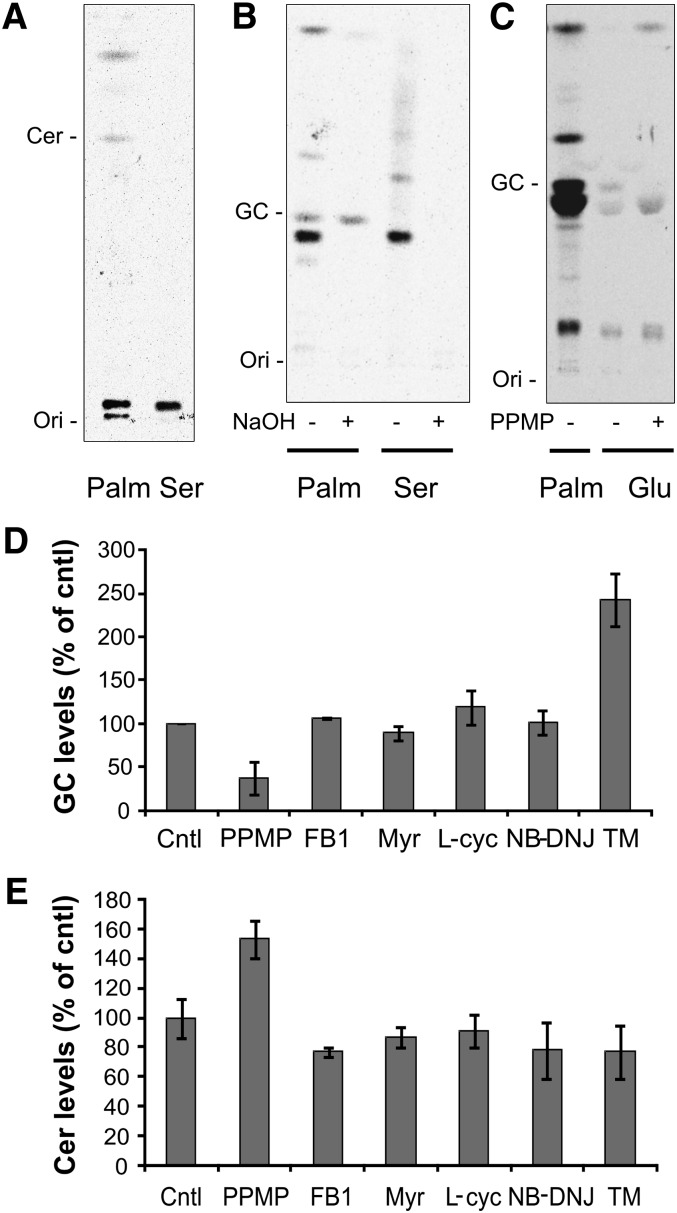Fig. 3.
G. lamblia incorporates [3H]glucose but not [3H]serine in GlcCer. A: Isolated parasites were labeled with [3H]palmitic acid (Palm) or [3H]serine (Ser) for 3 h and the extracted lipids separated by 1D-HPTLC using the solvent system C. For serine-labeled samples, lipid aliquots corresponding to three times the protein amount of palmitic acid-labeled samples were used to compensate for the reduced incorporation efficiency. Note the absence of ceramide labeling with serine. B: Extracted lipids were saponified by mild alkaline hydrolysis (NaOH) and separated using the solvent system B. Note the complete hydrolysis of the serine-labeled lipids. C: Parasites were labeled with [3H]glucose in presence of 10 μM PPMP or solvent alone. Extracted lipids were separated using the solvent system B. Note the decreased amount of the band comigrating with GlcCer upon PPMP treatment. Ori, origin. D: Isolated parasites were labeled with [3H]palmitic acid for 3 h in presence of solvent (cntl), 10 μM PPMP, 50 μM fumonisin B1 (FB1), 20 μM myriocin (Myr), 500 μM L-cycloserine (L-cyc), 400 μM NB-DNJ, and 60 μM tunicamycin (TM). Lipid aliquots corresponding to equal protein amount were separated by 1D-HPTLC using the solvent system B or C (panel E). GlcCer (GC) and ceramide (Cer) levels are expressed as percentage of untreated samples (cntl); data are average ± SE (n = 3) of a representative from three experiments done in triplicate. Note the opposite effect of PPMP and TM treatment on GlcCer levels.

